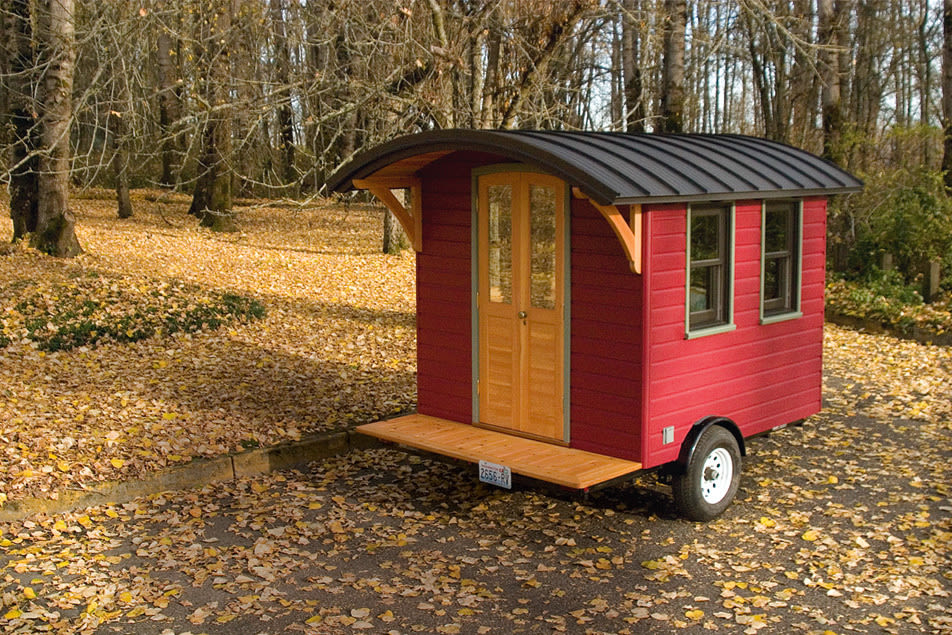Shrink City

Portland Alternative Dwelling’s tiny house
Dee Williams and Katy Anderson are banking that the next big thing to hit Portland’s housing market won’t be much larger than a walk-in closet. In January, the business partners launched Portland Alternative Dwellings, a grassroots tiny-home construction company. And they mean teeny-tiny.
Built in Anderson’s North Portland backyard, the pair’s prototype dwelling was envisioned for homeowners who need additional room but aren’t quite ready to leap to a larger house. Each one offers about 56 square feet of living space, complete with a pullout double bed, a kitchen nook, radiant-heat cork flooring, and custom-made French doors. All of this is wrapped in red clapboard walls and topped with a barrel-vaulted metal roof. The price tag? $22,000.
Matchbox-size residences aren’t new in Portland. Local zoning laws began allowing back- and side-yard Accessory Dwelling Units (ADUs) in 1998. And in 2004, the city held a “skinny house” competition to spur better designs for the boom of 15-foot-wide houses springing up on narrow city lots. But now the rest of the nation is joining the big shrink. Last year, according to the US Census Bureau, the average new home shrunk by 4 percent to 2,373 square feet—the first decrease in 15 years.
“I think all of us are going to be more realistic about what kind of homes we’re going to live in,” says Jim Chapman, president of Legend Homes, Oregon’s fifth-largest homebuilder. In January, Chapman’s company debuted a collection of earth-friendly homes near Tigard that measure about 2,000 square feet apiece—10 percent smaller than anything he’s built in the past. Even in Forest Heights, where 5,000-plus-square-foot homes are the norm, the freshly minted Macleay Overlook is offering eight homes topping out at a comparatively petite 2,700 square feet.
As the sun sets on the McMansion era, Portland Alternative Dwellings still awaits its first sale. But Katy Anderson is happy to simply provide inspiration. “These little structures give people a vision,” she says. “They don’t have to buy into that train—the big house, the big mortgage—more, more.”










